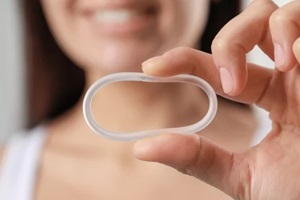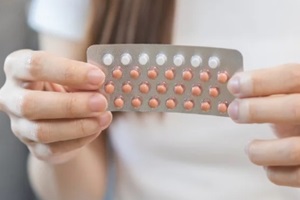 Regular doctor visits are essential for maintaining well-being and good health. However, did you know that some examinations are possible at home? Women should regularly conduct breast self-exams as a supplement to their regular gynecological visits to protect their breast health and catch issues early.
Regular doctor visits are essential for maintaining well-being and good health. However, did you know that some examinations are possible at home? Women should regularly conduct breast self-exams as a supplement to their regular gynecological visits to protect their breast health and catch issues early.
Conducting a self-exam is simple once you understand how. It can be done any time, any day, with no special preparation, so many women create a habit of checking monthly or even weekly.
Here is important information on why regular breast self-exams can make a difference, what to look for, and how to conduct an exam from the comfort of your own home.
Why Conduct Regular Self-Exams?
Breast cancer is a leading cause of mortality in women; more than 300,000 new cases of breast cancer arise every year in the U.S., and over the course of a lifetime, a woman has around a1 in 8 chance of developing this disease. Of the types of cancer that women can get, breast cancer is the second leading cause of death.
To get ahead of any potential cancerous developments, women should conduct regular breast self-exams. This allows them to become familiar with how their normal breast tissue feels. In turn, they may be able toidentify potentially cancerous masses in their earliest stages.
Failing to conduct regular breast exams, both at home and with a professional, can lead to undetected breast cancer growth. If a malignant nodule spreads (metastasizes), it can lead to cancer in other parts of the body, making treatment more complex and less successful on average.
How to Do a Breast Self-Exam
Breast self-examinations are not a difficult or time-consuming practice! In fact, many women choose to do a quick exam every time they shower or go to bed because it only takes a few minutes.
First, think of your breast as a clock. Using the pads of your fingers, glide your hand downward from 12 o’clock (at the collarbone) toward the nipple, feeling the breast tissue slowly as you go.
Next, repeat this motion using a different level of pressure. It is ideal to feel each area multiple times using light, medium, and firm pressure to check multiple depths of breast tissue.
Once you have thoroughly checked the 12 o’clock line, move on to 1 o’clock and repeat the process until you have gone in a complete circle around the breast.
 Be sure to feel the areas around the collarbone, ribs, and armpit, as breast cancer does not solely develop in the meaty portion of the breast near the nipple.
Be sure to feel the areas around the collarbone, ribs, and armpit, as breast cancer does not solely develop in the meaty portion of the breast near the nipple.
In addition to the manual exam, be sure to look at the breasts visually from time to time—such as before you get in the shower.
Check to see if one is notably larger than the other (and this is new for you) or if one has changed in shape or appearance. Dimpling or nipples that are turning inward are also things to note.
What Is Normal (And What Is Not)
When conducting a breast self-exam, it is common to worry about what you feel—especially if this is your first time carefully touching your breast tissue and you are unfamiliar with the sensation. Some of the things you may notice that are normal are:
- Regular elevation changes as you press. This likely indicates that you are feeling your upper ribs.
- Textural changes, especially if you examine regularly. Breast tissue can become more fibrous during certain phases of the monthly cycle.
- Long, firm lumps. The ribs can mimic concerning lumps, but they extend sideways and remain the same over time.
Once you get an idea of what is normal for your breast tissue, you can begin to find abnormalities. Indicators that you should see a gynecologist include:
- Hard knots or lumps
- Warmth or swelling
- A patch that feels different than the surrounding tissue (for example, thicker or fuller)
- Bulges or dimples
- Itchiness, sores, or rashes similar to hives
- New or bloody discharge from the nipples
- Nipple changes (for example, shape or orientation)
Schedule Your Regular Checkup to Protect Your Health
 Breast self-examinations are the first line of defense for women to catch potential breast cancer early. The good news is that many lumps and bumps are normal, or benign, meaning they will not become cancer.
Breast self-examinations are the first line of defense for women to catch potential breast cancer early. The good news is that many lumps and bumps are normal, or benign, meaning they will not become cancer.
If you believe that something is unusual with your breasts, schedule an appointment with a professional as soon as possible. You can also schedule your annual exam as a great opportunity to check on your health and confirm that your breast tissue is normal.
This gives you a solid baseline for how your breast tissue should feel. Contact Raleigh Gynecology & Wellness to schedule your next appointment or ask questions.


 In truth, more than 80% of suspicious lumps are first discovered on mammograms rather than noticed by women doing self-checks.
In truth, more than 80% of suspicious lumps are first discovered on mammograms rather than noticed by women doing self-checks. No breast cancer screening methods lower the actual risk of tumors developing in the first place. Mammograms excel at pinpointing cancers long before physical symptoms arise. This allows treatment while cells are still localized and non-aggressive.
No breast cancer screening methods lower the actual risk of tumors developing in the first place. Mammograms excel at pinpointing cancers long before physical symptoms arise. This allows treatment while cells are still localized and non-aggressive. A
A  A normal (or negative) mammogram result means the radiologist did not identify any cancer or other breast abnormalities. Benign findings such as cysts or calcifications may appear, but they are not dangerous.
A normal (or negative) mammogram result means the radiologist did not identify any cancer or other breast abnormalities. Benign findings such as cysts or calcifications may appear, but they are not dangerous. Biopsy
Biopsy Taking charge of your
Taking charge of your  Contraceptive patches and vaginal rings deliver hormone doses through the skin or vaginal walls rather than orally. The patch sticks to the skin, similar to a Band-Aid, and is changed weekly. The soft ring is inserted into the vagina monthly.
Contraceptive patches and vaginal rings deliver hormone doses through the skin or vaginal walls rather than orally. The patch sticks to the skin, similar to a Band-Aid, and is changed weekly. The soft ring is inserted into the vagina monthly. Morning-after pills such as Plan B One-Step and Ella contain oral doses of progestin, estrogen, or anti-progestins that delay or prevent
Morning-after pills such as Plan B One-Step and Ella contain oral doses of progestin, estrogen, or anti-progestins that delay or prevent 
 Endometriosis occurs when tissue similar to the uterine lining grows in other pelvic areas, such as the ovaries or fallopian tubes. The excess tissue thickens, breaks down, and bleeds monthly, causing inflammation, scarring, adhesions, and pain.
Endometriosis occurs when tissue similar to the uterine lining grows in other pelvic areas, such as the ovaries or fallopian tubes. The excess tissue thickens, breaks down, and bleeds monthly, causing inflammation, scarring, adhesions, and pain. Using oral contraception to regulate this hormonal often alleviates the intensity and frequency of these unpleasant episodes. Even lower dose formulations can reset your rhythm enough to rein in the radical highs and lows leading to problems.
Using oral contraception to regulate this hormonal often alleviates the intensity and frequency of these unpleasant episodes. Even lower dose formulations can reset your rhythm enough to rein in the radical highs and lows leading to problems.